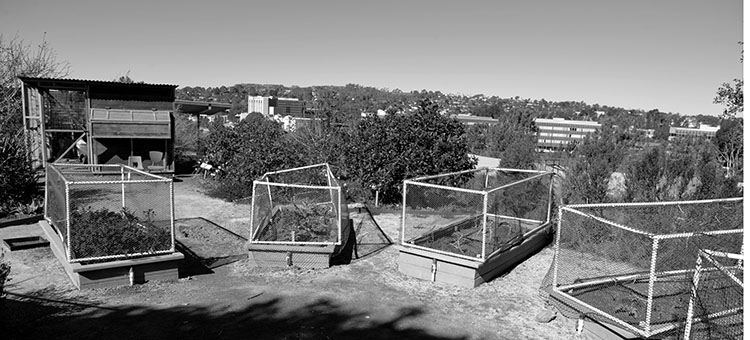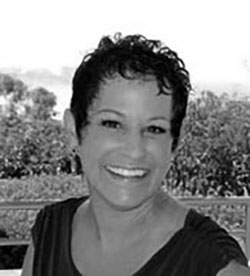 Editor’s Note: This is the 25th chapter in Volume 2 of Editor Emeritus Donald H. Harrison’s 2022 trilogy, “Schlepping and Schmoozing Along the Interstate 5.” All three books as well as others written by Harrison may be purchased from Amazon.com.
Editor’s Note: This is the 25th chapter in Volume 2 of Editor Emeritus Donald H. Harrison’s 2022 trilogy, “Schlepping and Schmoozing Along the Interstate 5.” All three books as well as others written by Harrison may be purchased from Amazon.com.
Schlepping and Schmoozing Along the Interstate 5, Exit 32 (I-5 Bypass): San Diego Jewish Academy
From northbound Interstate 5, take the I-5 Local Bypass North, turning right on California 56 east. After a half mile exit on Carmel Creek Road, turn right at the exit and proceed to San Diego Jewish Academy at 11860 Carmel Creek Road.

 SAN DIEGO – Turning Crisis into Success is a memoir that Richard Jaffe wrote with his daughter Charly about his experiences turning Nutri-Foods International and SafeSkin into public companies that later were sold to Coca Cola and Kimberly-Clark respectively. In that book, the coauthors also told about the time Richard’s wife Ann offered him an even bigger challenge: creating a legacy for their family.
SAN DIEGO – Turning Crisis into Success is a memoir that Richard Jaffe wrote with his daughter Charly about his experiences turning Nutri-Foods International and SafeSkin into public companies that later were sold to Coca Cola and Kimberly-Clark respectively. In that book, the coauthors also told about the time Richard’s wife Ann offered him an even bigger challenge: creating a legacy for their family.
The San Diego Jewish Academy previously operated in classrooms at Tifereth Israel Synagogue and Congregation Beth El. As a board member, Ann realized that the school didn’t have the space to accept many more students, yet its expenses were bound to increase. “The only sustainable solution is to build our own campus,” she told Richard. “By combining the two locations, we can consolidate the overhead and provide a lasting home of Jewish education for all of San Diego. I know I can’t do it alone, so if you’ll buy the land, arrange the financing and raise all the money, I will do all the building and hiring necessary to have a wonderful legacy for the both of us.”
Through many real estate twists and turns, the Jaffes were able to acquire for San Diego Jewish Academy the 42-acre site in Carmel Valley where it now sits. While Ann, who later served as president of the SDJA board, was interested in everything that her children, Brett, Charly and Maxi, would be exposed to at the school, one part of their overall education was particularly dear to her: nutrition.

Ann Levinson had been a registered dietician when she met her future husband Richard Jaffe at a food conference at the Hotel del Coronado. She had received her degree from Michigan State University in East Lansing, became a Registered Dietitian Nutritionist after passing the national exam, and did an internship with the Milwaukee public schools. Following the internship, she became the food manager at a dormitory at UC Riverside. From 1981 through 1984, the year of her marriage, she served as director of food service for the Escondido Elementary School District.
As at many schools, providing children in Escondido with healthy meals was a challenge. Schools must follow detailed federal guidelines while offering food that the children actually will want to eat. “How do you make it creative and comfortable and not so foreign to the kids when their parents aren’t serving them healthy foods and they are not familiar with them?” was how Jaffe described her challenge.
Many of the pupils in Escondido received free or reduced-price breakfasts and lunches because they came from low-income homes. Jaffe recalled that she “got a local place to make bagels and I had to introduce them to the children: ‘Looks like a donut, tastes like a pretzel.’ Back then, they had no idea what a bagel was.”
No, she didn’t shmear them with lox and cream cheese, which would have been “above our price point, but they liked bagels very much. I also introduced them to more vegetables and got them hooked up with Hidden Valley dressings so that they would eat more vegetables—whatever it would take.”
“More fruit, more vegetables” is almost a mantra for Jaffe. Unfortunately, she said, many school children “are not used to fruit and vegetables. They are not familiar with what is real food and not processed. That’s the thing that was, and still is, an issue for young people. Today’s parents grew up not cooking and not seeing their parents cook a lot. So, it is ‘how do you introduce real food?’’
One answer was to work with Student Nutrition Advisory Councils (SNACs) to involve the students in food choices. “We would ask, ‘what recipes do you like the best?’ when we were making burritos. We were lucky that in enough Escondido schools we could do scratch cooking and not frozen prep, so we could be very creative that way. There were schools, however, that did not have kitchens because in California they do not always build schools with full kitchens.”
After the Jaffes were married, she worked as National Marketing Manager for the Food Service Division of Nutri-Foods. In that position, she traveled nationally to meet with food brokers until her first child, Brett, was born. Afterwards, Coca Cola and Richard had a parting “in a nice way” and the family moved from Houston to Del Mar for nine years before relocating to La Jolla. As she had been familiar with the Jewish Federation in Houston, Ann became involved with the local Jewish Federation’s Women’s Division and its Young Business and Professional Council.

Learning about San Diego Jewish Academy, “I thought that is what I want for my son, so he doesn’t have to choose between being a Jew and a jock. He was all of three years old.” Soon she was invited to serve on the board under the presidency of Claire Ellman and with the encouragement of Rhona Fink.
With another Registered Dietitian, Jaffe gave “classes on introducing vegetables to kids, what alfalfa sprouts look and feel like, then tasting it, and mushrooms.” Once the property was secured and the buildings constructed, Jaffe worked with restaurateur Edwin Blumberg, who designed SDJA’s “fully kosher kitchen with a fence down the middle,” she related. “There is a diary side and a meat side. There was one walk-in freezer but divided down the middle. There are different colored dishes, red for meat, blue for dairy. That is the way things were. They’ve made a lot of changes over the years. We went from Styrofoam to eco-friendly disposables with the help of the students!”
San Diego Jewish Academy has a diverse student population, with perhaps 25 percent of the students hailing from former South African families, another large percentage representing the Mexican Jewish community, along with a sprinkling of Israelis, and the rest North Americans.
In 2008, Jaffe joined the school’s Healthy Habits committee which had been organized by Ashley Stone. The committee called for the elimination from the campus of stands at which children could purchase ice cream, pretzels, and other junk food. “Within a year, we got that phased out,” Jaffe recalled. “Why have processed foods when we are teaching the kids to be the best version of themselves, knowing what goes into their bodies? We got salad bars for the kids to be included in their lunch so they could fill up on as many vegetables as they’d want.”
Additionally, “We worked with a local farmer who harvested persimmons and served them schoolwide in an assembly, in classes, or during a break, and showed what the nutritional level was and how yummy they were. Many kids had never tasted them. So, we used to do that in a ‘harvest of the month.’ Many public schools do that now, introducing local farmers and sustainable practices.”
On occasion, teachers needed to be reeducated about food, particularly about not using junk food as a reward. One elementary school teacher, Jaffe recalled, “had a draw full of rewards, pencils, stickers, and lots of junk food. We encouraged her and other teachers to look at how they are elevating things like junk food as a reward and what that does to kids.” To replace candies and other junk food, Jaffe recommended tschotschkes and small toys such as jacks, decks of cards, and little games that might help small finger movement.
Unlike the Escondido Elementary School District, where milk was served every day to meet the federal requirements for protein, San Diego Jewish Academy rotates dairy meals with those featuring meat dishes. To make certain there is sufficient protein in the students’ diet, “one day you choose pizza; the next day maybe it is a taco without cheese, but with more meat,” Jaffe said. “Then maybe a bean burrito with cheese. Beans alone have enough protein, so they work on it that way.”
A 5,000-square-foot garden on the campus, named for the late kindergarten teacher Levana Estline, produces kale, tomatoes, onions, garlic, and “lots of parsley especially for Passover,” Jaffe said. “We have horseradish, which takes a while, but we will use that for Passover too. They have fruit trees and the seven species in the Bible,” which are wheat, barley, figs, dates, grapes, olives, and pomegranates.
Until recently when she went on maternity leave, Giselle Wellman, recognized as a Bravo Top Chef, directed food operations at the school, coming up with such arresting menu offerings as chocolate hummus. “She did wonderful things, lots of education for the kids,” Jaffe said. “She really got into the garden education and utilized a lot of the garden’s produce. When you talk about serving local foods; you can see it from the kitchen practically.”
San Diego Jewish Academy entered into a contract with SAGE Dining Services for K-12 students. It was scheduled to begin as a pilot program following Passover 2022 and to be fine-tuned from then until the summer break.
According to a notice sent by the school to parents, SAGE offers an “all-you-care-to-eat community-inclusive program with top quality, variety and service; a freshly-made kosher menu including a nourishing main dish with a variety of starches and fresh vegetables as sides; salad, deli, and soup options; creative, food-truck-style fare; authentic Latin and Asian dishes; and expanded vegetarian options including produce from Levana’s Garden.”
Another aspect of the SAGE program is labeling goods as “red, yellow, or green” to educate the students, Jaffe said. “Green—I’m supposed to eat lots of this; yellow –well, some of this; red—okay but let’s not overdo red. So, it is an educational way of teaching kids without calorie counting which gets into body images and a lot of other eating disorders.”
“SAGE has a whole team because it is a national company,” Jaffe said. “That cost is spread out over all their schools. Their recipes are well done. The education is really well done” particularly compared to small schools where one person is expected to include nutritional research among many other duties.
Jaffe said that SDJA has a longer lunch period than most schools because it recognizes that students otherwise might gobble their food or not eat at all. “At most schools, you need time to walk there, talk with your friends, and if you have a social child, they’re going to gab with their friends and not eat. They’ll come home starving and tell their parents that it was because the food isn’t good, and not the real reason that they were chit-chatting with friends.”
She said that such countries as Japan and France are worth emulating in the way they manage students’ need for social time, time to eat, and proper food etiquette.
“In Japan, they actually sit down and one of the kids (on a rotating basis) is the one who brings the food and they do it almost family style. Then they all clean up together, so it is not the janitors cleaning up after the kids. They learn to take responsibility, how to serve, how to be kind to each other, and how not to make a mess.” Some Japanese educators look askance at the U.S. where some people eat while walking or driving, Jaffe commented.
“France also teaches them food etiquette with a knife, spoon and forks,” she said. “Not just a plastic fork that you throw out.” France permits students “proper time to digest their food and have a conversation.”
I asked her to describe her general food philosophy. “If it grows on a plant, it’s pretty good for you; if it is made un a plant not so much,” she responded. “I’m a proponent of real food: lots of vegetables and organic foods without chemicals.” She said she believes that processed foods are what lead to various medical and health issues, including gluten intolerance.
While Jaffe occasionally will eat fish, she reports that she prefers a vegetarian diet and that her husband, Richard, will eat poultry and fish, but not meat. Her daughter Charly is closer in her dietary preferences to Ann, while Brett and Maxi are both carnivores.
Jaffe’s hope for SDJA students is that by the time they graduate, “they have had a full holistic experience so that they are fully functioning, independent human beings who know how to take care of themselves, and care about their community.” She will be pleased if they are “taking care of the garden, nourishing their bodies with good food, and perhaps the next generation will learn how to cook instead of microwaving.”
With Carly Feuerstein who heads the Wellness Task Force, Jaffe said she is excited to emphasize “not just the food, but environmental sustainability, nutrition, and total physical health, so when the kids leave the school, they have all these tools in their tool box.”
*
Donald H. Harrison is editor emeritus of San Diego Jewish World. He may be contacted via donald.harrison@sdjewishworld.com